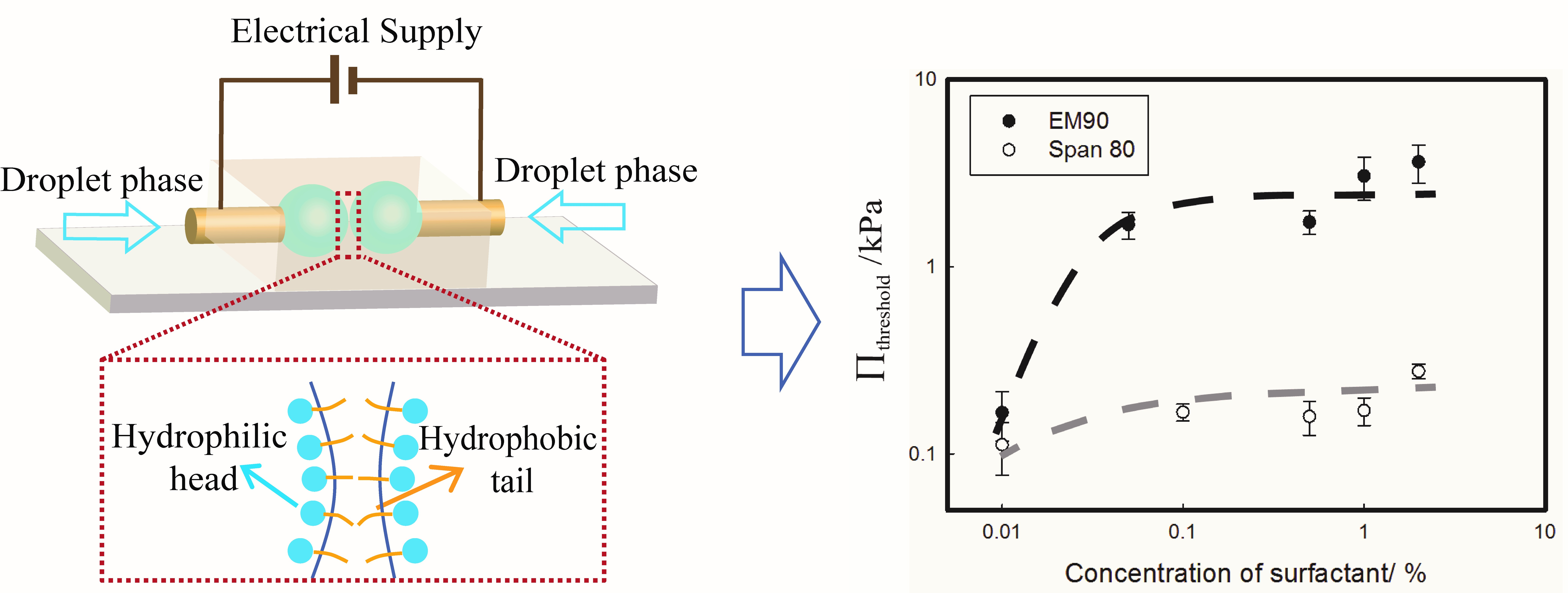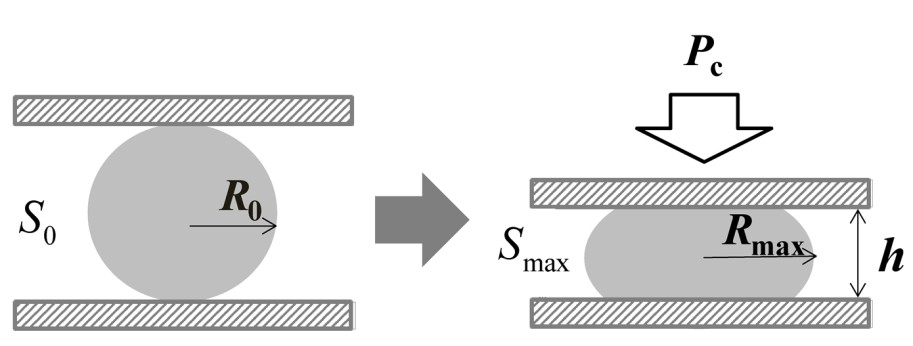Research
Electro-microfluidics
Dynamics of oppositely charged emulsions droplets
Dynamic behaviors of two pinned droplets under the influence of an applied electric stress are investigated in this work. At sufficiently strong fields, the electric stress can induce the contact of the droplets, resulting in three types of dynamic behaviors sensitively depend on the separation distance between the droplets. Besides the classical “coalescence” regime, we identify two other dynamic regimes: “fuse-and-split” and “periodic non-coalescence”.
Reference: "Dynamics of oppositely charged emulsion droplets" by Zhou Liu, Hans M. Wyss, Alberto Fernandez-Nieves and Ho Cheung Shum*, Physics of Fluids, 27, 082003
 Threshold disjoining pressure of emulsions can be probed through the droplet-based electro-coalescence
Threshold disjoining pressure of emulsions can be probed through the droplet-based electro-coalescenceProbing threshold disjoining pressure through the electro-coalescence of emulsions
Using a custom-built device, we have systematically investigated the electro-coalescence of emulsions in droplet level. Through studying how the surfactant type, concentration, and even temperature affect the electro-coalescence, we have devised an approach to quantitatively characterize the stability of emulsions using the threshold disjoining pressure.
Reference: “Droplet-based electro-coalescence for probing threshold disjoining pressure" by Zhou Liu, San To Chan, Hammad Ali Faizi, Robert C. Roberts and Ho Cheung Shum*. Lab on a Chip 15, 2018
Microfluidic electrospray techniques to fabricate multi-compartment particles
The microfluidic electrospray techniques take the advantage of the microfluidics to fabricate droplets with the complex architecture using laminar flows and the advantage of electrospray to make smaller droplets using an external electric stress.
Reference: 1. “Fabrication of uniform multi-compartment particles using microfluidic electrospray technology for cell co-culture studies” by Zhou Liu, and Ho Cheung Shum*. Biomicrofluidics, 7, 044117; 2. “3D printing-based electro-millifluidic devices for fabricating multi-compartment particles" by Qiu Lan Chen, Zhou Liu and Ho Cheung Shum*. Biomicrofluidics 8, 064112
 Characterizing the robustness of liquid marbles through the mechanical compression.
Characterizing the robustness of liquid marbles through the mechanical compression.Mechanical compression to characterize the robustness of liquid marbles
Combining the force detection and high speed imaging, we have studied the rupture of particle-coated droplets (liquid marbles) under a mechanical compression. We have identified a critical pressure which characterizes the mechanical robustness of liquid marbles. Also, our approach enables us to monitor the particle-coated surface of the liquid marble in response to the mechanical compression, which helps us to understand the rupture mechanism.
Reference: "Mechanical compression to characterize the robustness of liquid marbles" by Zhou Liu, Xiangyu Fu, Bernard P. Binks and Ho Cheung Shum*, Langmuir, 31(41), 11236
